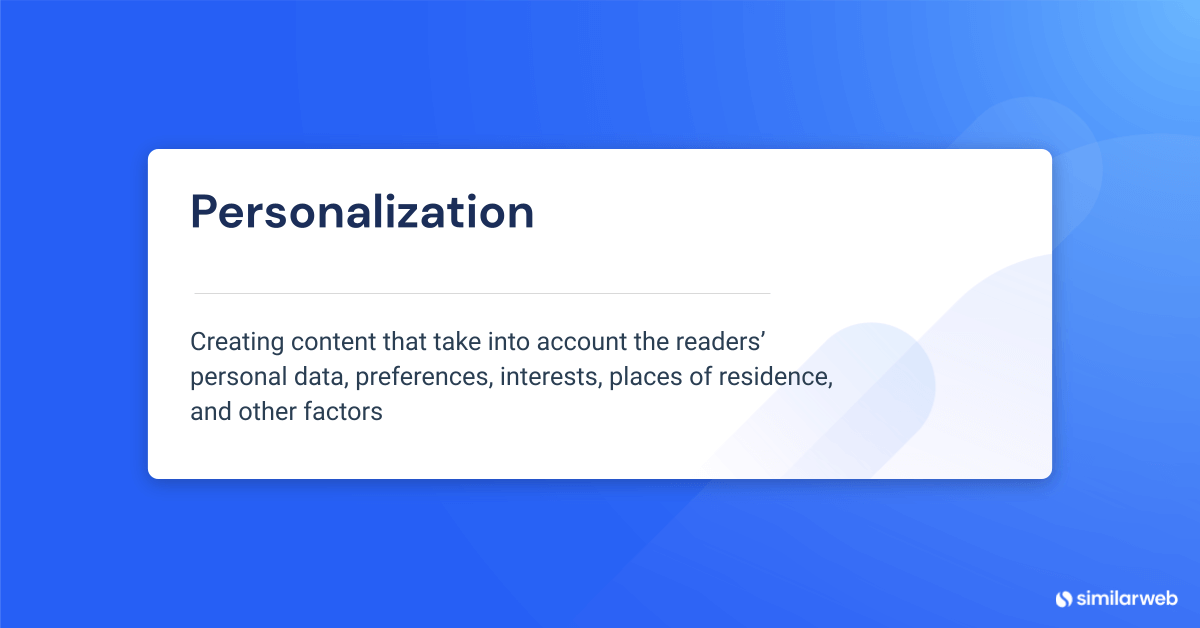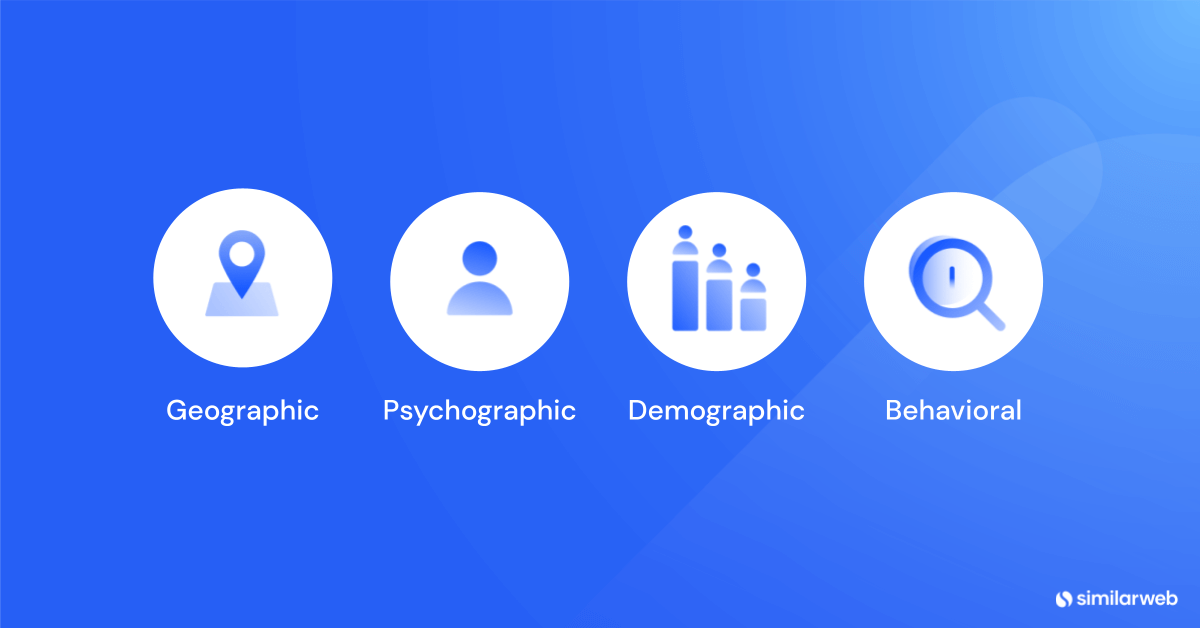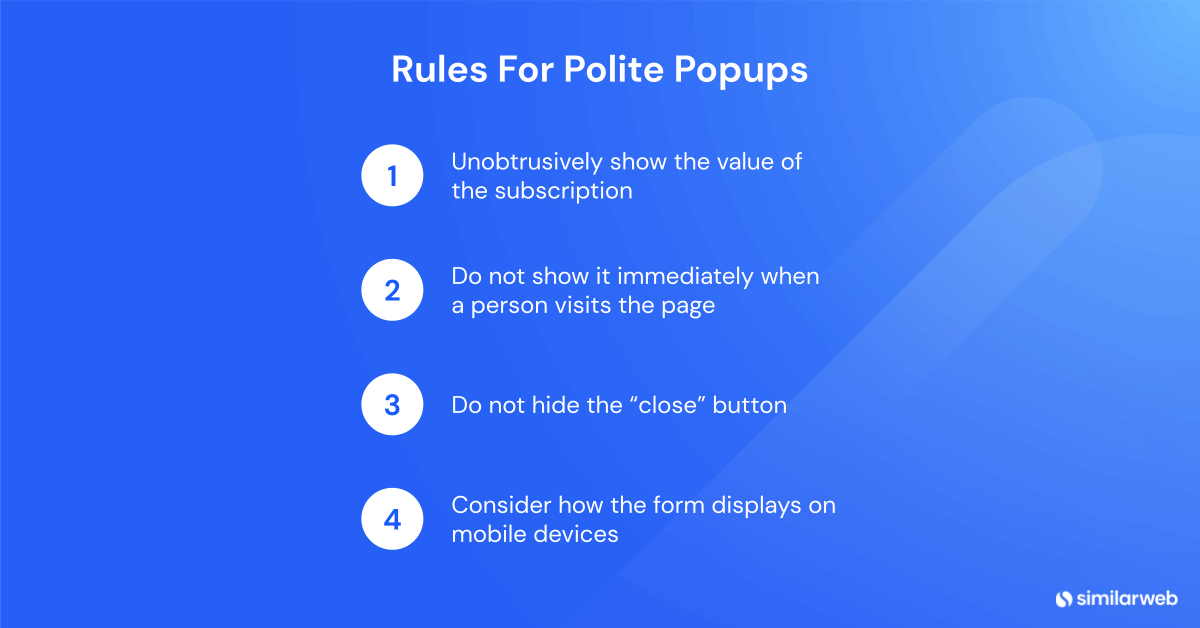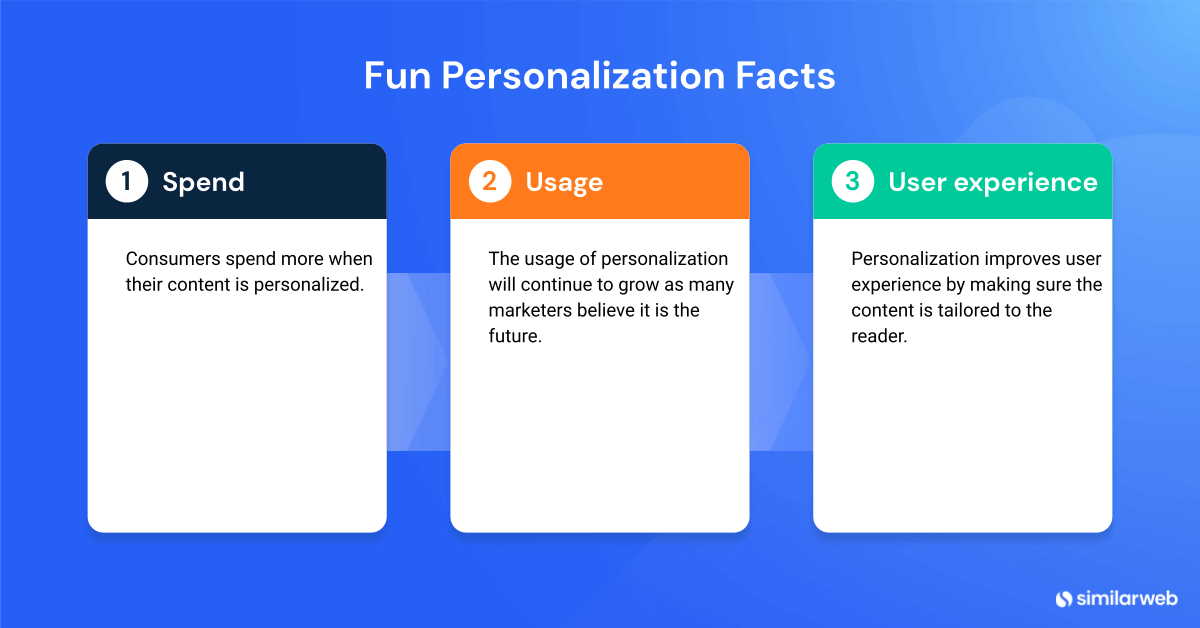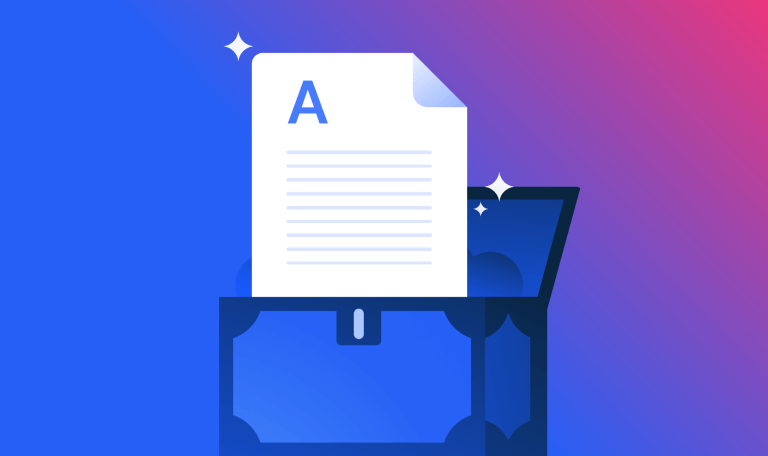Data-Driven Tactics for Your Email Campaign
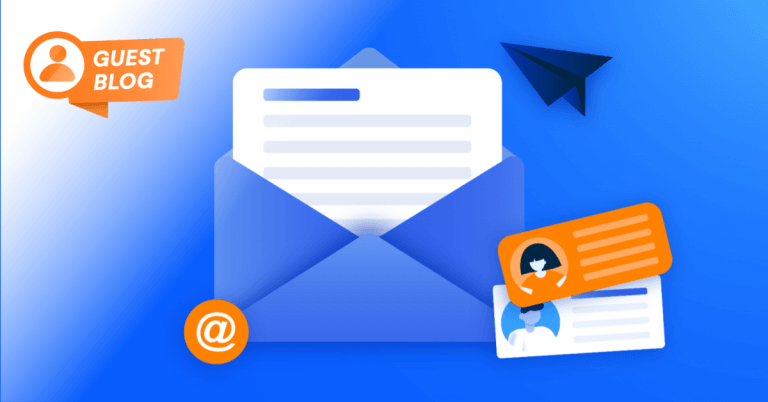
No promotion method is as stereotypical as email marketing. Identified by intrusive, chaotic mailings, spam, and its imminent death, it’s a dinosaur in the world of digital tools, but still continues to explode the market with new technologies, work for customer retention, and bring profits. No matter what anyone predicts, the era of email marketing is far from over.
Just imagine, according to Statista, there are 4 billion daily email users. This number is expected to grow to 4.6 billion by 2025. Check this out: The world’s population in 2021 is 7.9 billion, with 4.66 billion of those being Internet users. Just over 4 billion of all Internet users have an email account – about 85% of all users worldwide.
But for it to work, the email marketing strategy has to be well thought out. Lucky for you, we’ve done all the work. Read on for effective and relevant tips about modern email marketing strategy based on statistical data.
Why does data-driven email marketing matter?
There’s a difference between a person who uses social media and a social media marketer, right? The same is true for email marketing. Literally anyone can collect email addresses and shoot out some spammy emails. Only an email marketer reads the data, learns how different emails perform with different audiences, and benchmarks and optimizes their email marketing strategy.
It’s fairly intuitive that all audiences react differently to different email marketing tactics so you need a data driven approach to see what resonates with your target audience.
Let’s dive into some popular email marketing tactics.
Personalize and segment
Since each audience reacts and engages with content differently, a data-driven email marketer has to understand the motive behind their potential customer clicks to successfully personalize and segment brand emails.
Imagine opening the door of your favorite store. The cookies you come in for everyday are waiting on the counter already. The salesperson knew when and why you were coming and set aside all your groceries in advance. That’s the kind of store you want to come back to, even if the prices are a little higher than in neighboring stores.
It’s the same with personalization in emails. Not only are personal letters just plain nice, they’re also very useful, because the only thing worse than a non-personal note is one sent to the wrong address. Imagine receiving an email about discounts on dog food when you own a cat and never subscribed to this kind of news – not ideal. Or having to weed out emails for anti-aging creams when you’re not even 21 – rude! 74% of users in the United States are upset if the newsletter has nothing to do with them personally. This happens if the sender doesn’t segment subscribers and just sends messages to the entire contact base. Not a good idea.
Personalization means creating emails that take into account the recipients’ personal data, preferences, interests, places of residence, and other factors. Such newsletters are more effective: Research shows that on average, they bring 18 times more profit than unsegmented emails. What’s more, segmenting an email marketing campaign strategy helps increase open rates and drive revenue by as much as 760%.
So how do you customize personalization to get more out of your newsletters?
Repeat after me: Addressing someone by name does not equal personalization. It works, but it all depends on the context.
Say you want to announce a closed sale, wish your client a happy birthday, or invite them to a VIP club. Feel free to address by name. In this case, you increase the chances that your letter will be opened by 26%.
If you’re sending a newsletter to the entire base about a contactless delivery, promotion, or branch opening, you don’t have to mention the customer’s name at all. Moreover, there are users who provide incorrect information about themselves. An email along the lines of “febigvghydbn1997, we’re launching contactless delivery!” is unlikely to increase conversions. But even if you don’t use a name, try to spark intrigue from the first line. About 70% of users don’t read all their emails, but instead immediately determine that it’s spam just by looking at the first line.
How should you segment your base?
By data
Research your target audience. Break your contacts into segments and start sending mass emails correctly. You need this so that each unique audience gets ads, content, and offers tailored to their interests and buyer persona.
The data you’ll need for segmentation:
- Gender. If you sell directly to customers, this parameter is literally mandatory. While not everyone or every product falls into this trope, many brands choose to market to a specific gender and craft messaging accordingly. (Think about how Dove primarily features women in it’s ads. Coincidence? I think not).
- Age. Obviously, people’s interests, needs, and shopping habits change as they get older. You could assume a 10 year old is less interested in home repair ads than a 40 year old homeowner.
- Location of residence. If it matters in a particular post/series. Information that you’ve opened a branch in Chicago, for example, is only of interest to Chicago residents. Also, consider what this means for the timing of your emails and segment according to timezone.
- General interests. iF you sell toys, clothing, experiences, travel.
- Additional data to help you segment your base. This includes occupation, interests, skin type, clothing, shoe size, etc.
By interactions
Take a look at a subscriber’s history of interactions with the brand. Most likely, there are customers in your base who have bought something at least once or have been reading your emails for a long time (well, at least they open them occasionally, which is no small thing). You need to understand how often they do it and what they order. Fortunately, there are many tools to easily collect statistics on emails (we’ll come back to this later).
For example, if a user buys coffee beans from you once a month, send a promo code for free delivery. It’s a small thing, but your customer will take note of and enjoy it. Not to mention it gives them a reason to repeat the order.
Another example: Three weeks ago, a customer bought a 30-pack of disposable contact lenses. Send a reminder that it’s time to restock. 48% of users are willing to spend more and make purchases if the email is personalized.
Third example: The user abandoned the cart on the site. There can be many reasons, but if you send an email within one hour after the user abandoned their cart, it increases the chance that they’ll complete the purchase by 6,33%. The open rate for such emails is 40.14%, which is pretty high.
But if the subscriber hasn’t interacted with the newsletter in any way for six months or more and they’re not an active customer, you can send them a re-trigger email to ask if they want to remain a subscriber. Since there’s less value associated with these inactive subscribers that aren’t customers, you’ll see better results and spend less by removing these emails from your lists.
Boost your database
Increase your database, segment, and analyze subscribers’ actions (or inactions) actively and constantly. Deleted inactive subscribers should be replaced by new and responsive ones. Remember, subscriptions should be voluntary. But how do you get such subscribers if they’re worth their weight in gold?
Striking sign-up form
A subscription page in the footer is a common solution for almost any site. Whether it’s a multi-page catalog or a webpage, there’s always room for it. Here’s a great example from an Amazon Seller Blog where a big, bold email sign-up form with a strong call-to-action message is used. It doesn’t take a lot of space and fits into any site, but not every user will reach the end.
Polite pop-ups
A pop-up window will keep visitors who leave the site and help get contact info of interested users.
In fact, it’s probably the most effective way to get attention, even though 73% of users don’t approve of pop-ups.
Email at checkout
The easiest way to gather a base of subscribers is to use customer contact info. This is an interested and loyal audience that can be segmented immediately. The only thing left to do is to get their consent to receive the newsletter –this is a must. Being an uninvited guest in users inboxes is a knowingly failed tactic: 45% of users won’t open an email from an unknown address.
Automate your email marketing campaign
Modern email marketing works successfully thanks to dozens of solutions for automation. 30% of marketers surveyed say that automation helps save time well. It also helps to retain customers, avoid mistakes, generate leads, and create personalized content. Three out of four businesses use automation for their email marketing campaigns, so don’t get left behind.
Automation works especially well for boosting “drip marketing.” These are message chains in which you regularly send messages to your subscribers to help further tailor your messages to specific users and improve personalization many times over. There are many services for automation: MailChimp, BombBomb, ActiveCampaign. Each of them has its own features.
There are also specialized tools for email signature marketing campaign automation, like the WiseStamp Signature Manager. Check these tools out, choose the one that best suits your goals, and implement it in your work as soon as possible, because businesses using automation drive 320% more revenue.
Make mobile-friendly email newsletters
The majority of all Internet traffic comes from mobile devices. It should come as no surprise that around 40% of emails are opened from mobile devices. That’s a strong argument for getting your mailing list adapted to different devices as soon as possible. 42.3% of users won’t even read the newsletter if it is not optimized for mobile. Comfort and simplicity are a trend in recent years in email marketing and beyond. The newsletter has to be easy and comfortable to read and interact with.
Make sure to also optimize your website for mobile users. If a customer follows a link in your email and can hardly spot your primary content because of intrusive banners that keep shifting, that won’t do any good to your marketing campaign. Mobile email optimization includes introducing responsive designs as well as working on page behavior metrics for a better user experience.
Even with these facts, one in five marketing campaigns is still not optimized for mobile devices. Lucky for you, it won’t be you. Sensing a theme here? Read on to learn about how to earn and enjoy high CTR and open rates of your emails.
Track CTR and open rate
Of course, it’s important that your letter is received and opened by the user, but we’re primarily interested in making the user want to click on it, go to the site, make a purchase, or finish the registration. As such, tracking CTR and open rate is extremely important, as well as curating a lightning-fast reaction if these figures drop.
First of all, you should understand what’s considered a normal open rate: 21.33% is the benchmark open rate for email newsletters across all industries. For welcome emails, however, it can be 50% or even more.
Using emoji and addressing recipients by name can potentially increase the chances of getting your email opened, but there are cases where it’s just not appropriate or depends on audience preferences.
CTR may signal clickability. Simply put, the higher the CTR, the more likely it is that you’re conducting audience segmentation and designing your emails properly. It means that the email comes to interested users and attracts them not just to read and forget but to take action. The lower the CTR, the sooner you need to change your tactics, because emails are coming to those who aren’t interested in receiving them.
My advice: experiment and watch the performance. You have to analyze the indicators yourself to get to know your subscribers better.
- Attach interactive units or video files to your emails. MarTech Advisor says you get up to a 300% increase in CTR this way.
- Add call-to-action (CTA) buttons. The average CTR for CTAs is 5.31%, according to Mixpanel.
- Run A/B tests. Without it, you’re only guessing and don’t have statistics to back it up. Test different techniques in your subject line like intrigue, a promise of benefit, appeal to your target audience’s pain, and humor.
- Play with the wording:
1 Are you appreciated at work?
2. You are underestimated at work!
This way, you can determine the most effective technique for your subscribers. Using these techniques will highlight the letter in the inbox and increase the open rate of the mailing. Don’t forget to test the use of the name in the first line, tone of address, visual elements, time of sending (don’t forget about time zones), and so on. In short, test everything that can be tested, and over time, you’ll come up with results that will impress you.
But to impress you now, here are some more valuable email marketing stats:
- There are 4 billion daily email users. That number is expected to climb to 4.6 billion by 2025. (Statista, 2021)
- One in every five email campaigns is not optimized for mobile devices. (Hubspot, 2021)
- 4.24% of users from email make a purchase compared to 2.49% from search engines and 0.59% from social media. (Monetate, 2012)
- Moreover, according to Hubspot, for every $1 spent on email marketing, you can expect an average profit of $38 which equals a 3,800% ROI. That’s the highest ROI if compared to other types of marketing!
- 99% of active users check their inbox every day (or even several times a day).
We hope we could motivate you to start an email marketing campaign strategy or improve your existing one. Remember, email marketing is alive and well for those who are ready to adapt and use the latest and greatest solutions. Don’t be old-school, but apply these modern tactics to your next email marketing campaign and let us know how it goes.
Disclaimer: This blog reflects the opinions of our guest contributor and may, or may not, reflect the internal opinions at Similarweb.
The #1 content marketing tool - get started
Give it a try or talk to our marketing team — don’t worry, it’s free!

